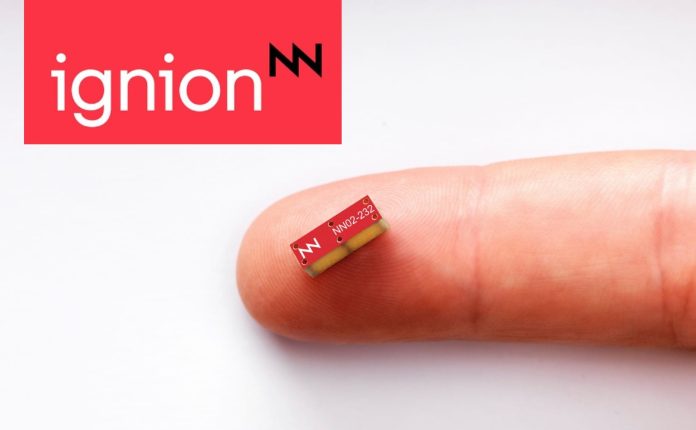Barcelona-based IoT antenna company Fractus Antennas has rebranded as Ignion. The company has reissued its mission statement, to establish its proprietary off-the-shelf multiband ‘virtual antenna’ chip technology as a driver for faster, cheaper IoT development, and a spur for ‘massive’ scale IoT deployments.
Industry veteran Jaap Groot has moved from general manager for the Europe, Middle East, and Africa region to chief executive; its website and ‘corporate image’ has had a makeover, as well. The firm said its embedded ‘virtual antenna’ tech has “started a revolution” in the IoT market, by removing the standard “design bottleneck” that comes with conventional printed antennas.
It claimed 25 million ‘antenna-less’ devices have been deployed during the past five years, based on miniaturised surface-mounted chip components called antenna boosters, which work with “any protocol, band, or application”, and require no hardware customisation. These include devices by the likes of Cavli Wireless, Nordic Semiconductor, Sequans, and Sierra Wireless.
Single antenna booster components can be reused across multiple mobile and wireless designs, reducing time to market, product development investments and finally, cost. Because the boosters take the form of a chip antenna, they can be assembled in production on the printed circuit board (PCB) of the device using conventional pick-and-place machinery, resulting in a lower production cost, as well.
The system architecture typically includes one or more antenna boosters, a matching network, and a ground plane layer embedded into the PCB of the device. The network needs to be customised for each device’ the antenna system can be adapted to cover multiple frequency bands, as required.
Fractus / Ignion has patented the ‘virtual antenna’ technology, and trademarked the brand.
Jaap Groot, chief executive at Ignion, said: “We are shaking up the IoT world as a global innovator with our Virtual Antenna technology. Too often, the development cycle for an IoT device is too long, and [often]… you need to redesign. Why? [Because of] the antenna… We have the technology… reduce time, reduce costs, and [provide a] competitive advantage.”

